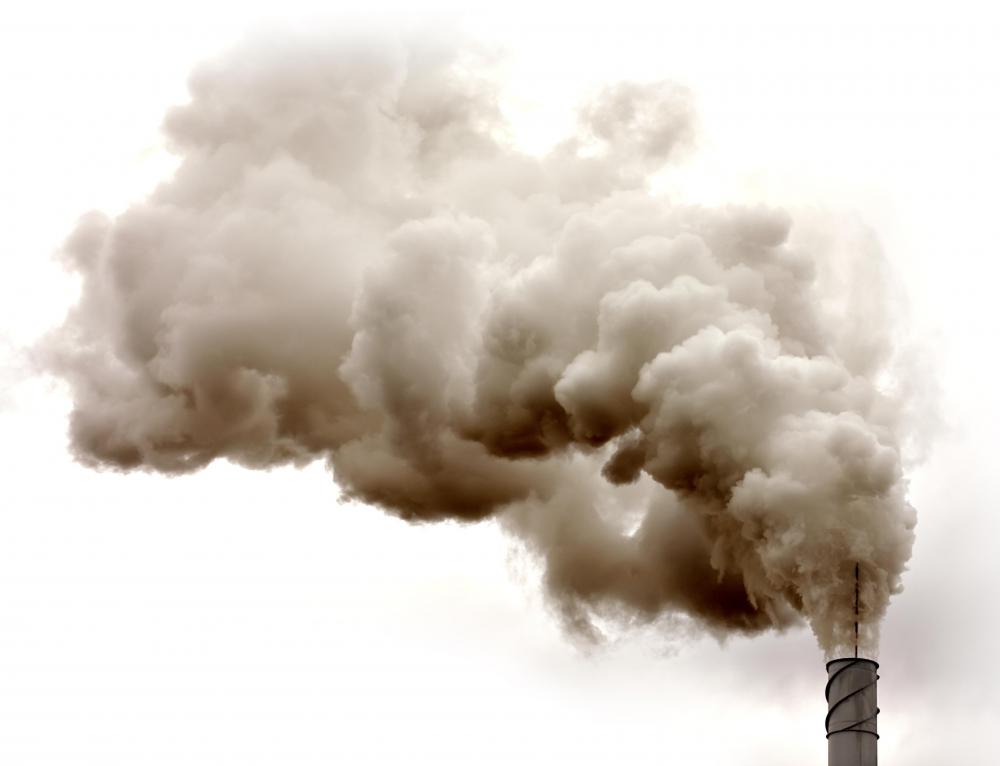At AllThingsNature, we're committed to delivering accurate, trustworthy information. Our expert-authored content is rigorously fact-checked and sourced from credible authorities. Discover how we uphold the highest standards in providing you with reliable knowledge.
What Are Environmental Factors?
The term “environmental factors” is a vague one that can refer to any physical or non-physical element that has an impact on plants, animals, and people who live in the area affected by the factor. Environmental factors play a role in everything from health to behavior, and can differ in significance between industries. For example, in medicine, the term refers to elements that impact health, while in horticulture, it refers to elements that aid or prevent the growth of plants.
Numerous different types of environmental factors play a role in the survival of a species. While those factors can vary, the most important factors include weather, water supply, and air quality. These three factors can affect just about everyone and everything in a specific environment, as well as directly impact each other. For example, both weather and pollution can affect water supply, and extreme pollution may affect the weather.

Weather-related environmental factors play a large role in everything from growing crops to driving to work. Most plants need specific climates in which to grow and thrive, and even the slightest unexpected change in temperature can ruin a crop. Icy or snow-covered roads can make getting to work difficult, which can result in loss of productivity. Those who live in areas affected by extreme weather often adapt and plan accordingly, but sudden shifts in weather patterns can make planning more difficult. For example, areas that rarely see snow may be unprepared in the event of an unexpected blizzard.

Just about every living thing needs an adequate supply of clean water to survive. While most developed countries have access to a steady supply of high-quality water, those in underdeveloped nations often struggle to find an uncontaminated source. A lack of clean water can lead to diseased crops, animals, and people. Even in developed countries, water can become a rare commodity during times of drought. Adapting to changes in water supply by restricting unnecessary use becomes very important during these times.

Like weather and water, air quality is another one of the environmental factors that plays a large role in the overall health of a species. Pollution in the air not only wreaks havoc on the health of the population, but can also be damaging to the physical structures. Even short-term exposure to pollution can negatively impact health by compromising the respiratory system.

Some environmental factors, such as clean water and air pollution, can be changed if the population of an area takes steps to improve the quality of their environment. Others, like the weather, are out of anyone’s control. Adapting to new factors is one of the most important ways to ensure survival in a constantly changing environment.
Frequently Asked Questions
What exactly are environmental factors?

Environmental factors encompass all the external elements that can influence an organism's life, including physical, chemical, and biological aspects. These range from climate conditions, such as temperature and humidity, to soil composition, water sources, and the presence of other living organisms, which all play a crucial role in shaping ecosystems.
How do environmental factors affect animal behavior?

Animals adapt their behavior based on environmental cues to survive and reproduce. For instance, temperature changes can trigger migration or hibernation, while the availability of resources like food and water influences foraging patterns and social structures. Predation risk from other species also significantly impacts how animals behave in their habitats.
Can environmental factors influence genetic evolution?
Yes, environmental factors are key drivers of genetic evolution. Through natural selection, traits that enhance survival and reproduction in specific environments become more common in populations over generations. For example, animals with camouflage suited to their habitat are more likely to evade predators, passing on their genes at higher rates, according to evolutionary biology principles.
What role do environmental factors play in ecosystem health?
Environmental factors are critical in maintaining ecosystem health as they determine the conditions for life forms to thrive. Balanced interactions between abiotic factors like climate and soil, with biotic factors such as plant and animal species, ensure sustainable ecosystems. Disruptions can lead to loss of biodiversity and ecosystem services essential for human well-being.
How do human activities impact environmental factors?
Human activities significantly alter environmental factors, often leading to negative consequences. Pollution, deforestation, and urbanization change landscapes and water quality, while greenhouse gas emissions contribute to climate change. These impacts can disrupt the delicate balance of ecosystems, leading to loss of species and degradation of natural habitats.
What measures can be taken to mitigate the impact of environmental factors on wildlife?
To mitigate impacts, conservation efforts must be prioritized. This includes establishing protected areas, restoring degraded habitats, and implementing sustainable resource management practices. Additionally, combating climate change through reducing emissions and promoting renewable energy sources is essential to preserve the natural environments that wildlife depend on for survival.
AS FEATURED ON:
AS FEATURED ON:
















Discuss this Article
Post your comments